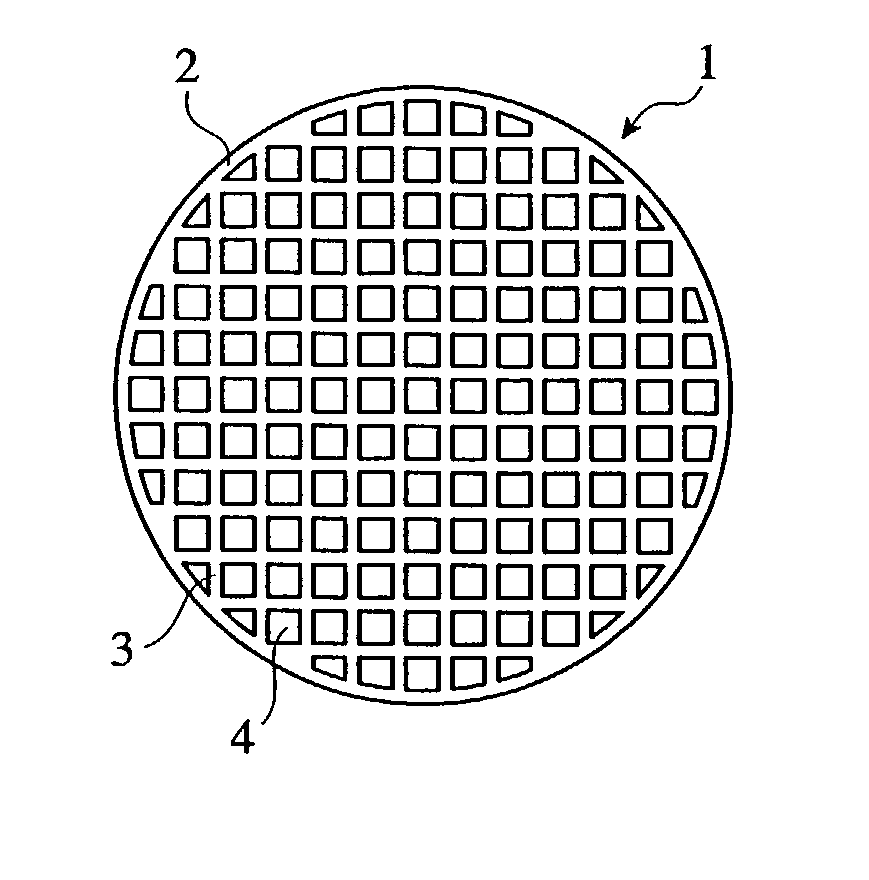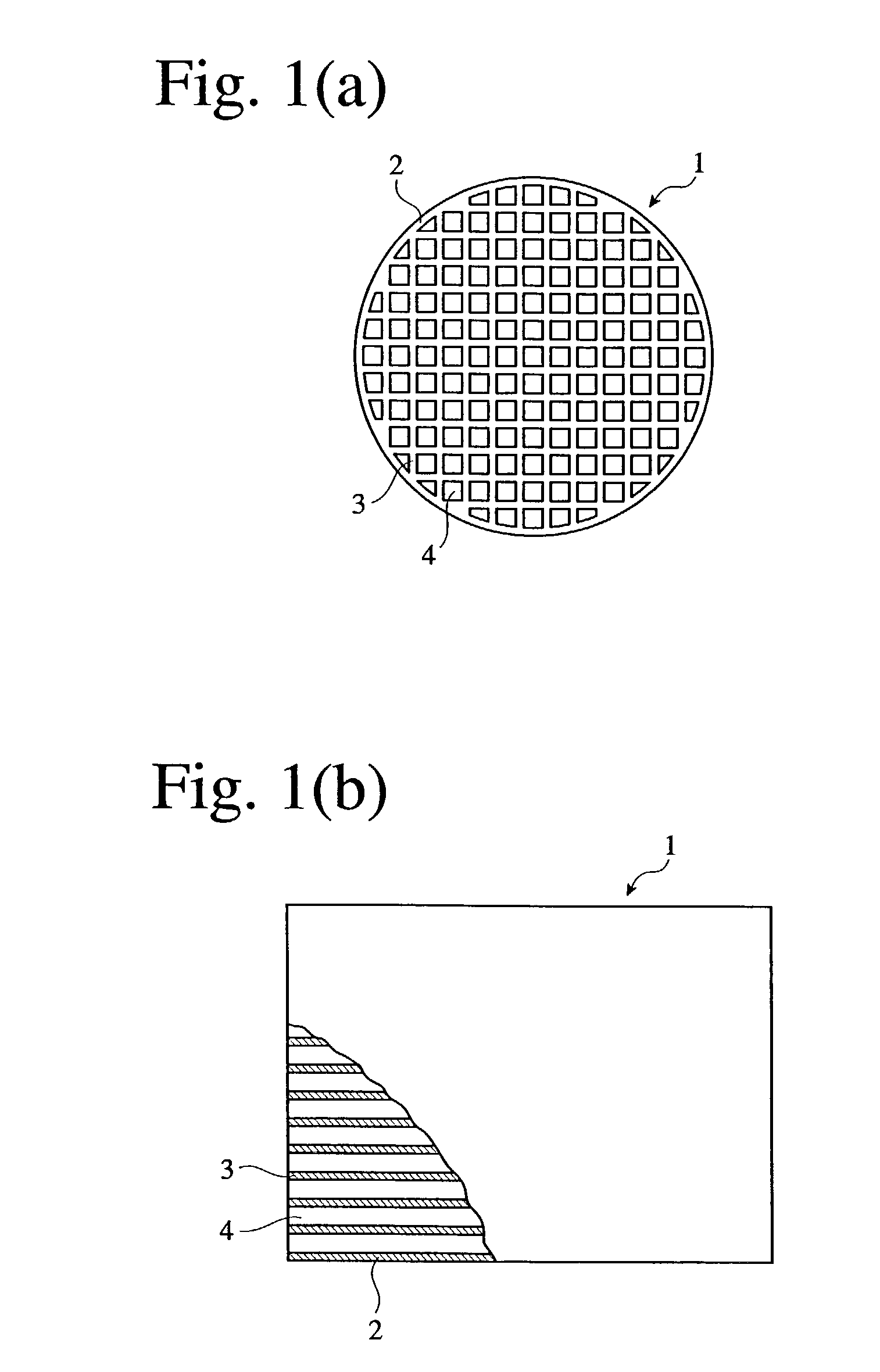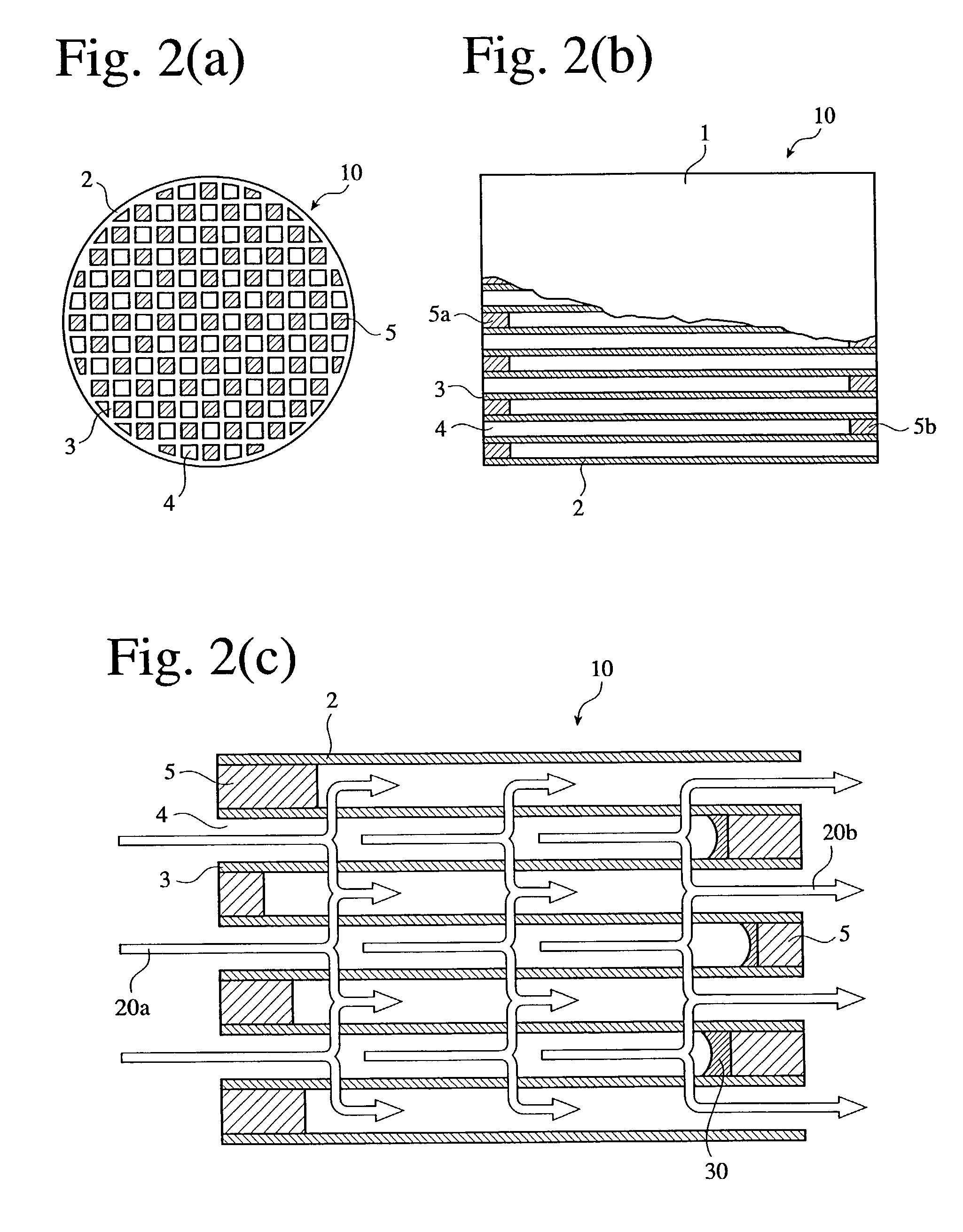Ceramic honeycomb filter and its structure
- Summary
- Abstract
- Description
- Claims
- Application Information
AI Technical Summary
Benefits of technology
Problems solved by technology
Method used
Image
Examples
reference examples 1-6
[0082] To form cordierite having a main component composition comprising 49-51% by mass of SiO.sub.2, 35-37% by mass of Al.sub.2O.sub.3 and 13-15% by mass of MgO, a cordierite-forming starting material powder comprising kaolin powder, calcined kaolin powder, alumina powder, aluminum hydroxide powder, silica powder and talc powder was mixed with a binder, a lubricant and spherical resin powder as a pore-forming material in predetermined amounts, and further fully mixed with water in a predetermined amount to form a plasticizable batch capable of being extrusion-molded to a honeycomb shape.
[0083] With the size of an extrusion die and the amount of a pore-forming material adjusted, honeycomb green bodies with square cross sections of flow paths and partition walls having various thickness and porosity were produced. Each green body was sintered after drying, to form a ceramic honeycomb structure of 150 mm in diameter and 150 mm in length. A pitch of partition walls was 1.5 mm in the re...
examples 8-13
[0107] A cordierite ceramic honeycomb filter 10 of 150 mm in outer diameter and 150 mm in length with 0.3-mm-thick partition walls at a pitch of 1.5 mm was produced in the same manner as in Example 1. The porosity of partition walls was 65%, the porosity of sealers was 78%, and the seal depth was 10 mm. In Examples 8-11, slurries 14 for sealers contained a spherical pore-forming material in the form of beads made of an acrylonitrile-methyl methacrylate copolymer resin in various amounts.
[0108] In each honeycomb filter 10, an arbitrary transverse cross section of a sealer was ground, and its SEM photograph was analyzed by the naked eye to determine whether or not there were pores having substantially circular cross sections. The SEM photograph was further analyzed by a commercially available image analysis software (Image-Pro Plus version 3.0 available from Media Cybernetics) to determine an aspect ratio of pore cross sections as illustrated in FIG. 14, thereby calculating among pore...
examples 14-23
[0111] To form cordierite having the same main component chemical composition as in Example 1, a cordierite-forming starting material powder comprising kaolin powder, calcined kaolin powder, alumina powder, aluminum hydroxide powder, silica powder and talc powder was mixed with a binder, a lubricant and spherical resin powder as a pore-forming material in predetermined amounts. Water was added to the resultant mixture to form plasticizable molding batches.
[0112] Using an extrusion die having an orifice means, whose slit width was controlled such that the resultant ceramic honeycomb structure had partition walls having nonuniform thickness, each molding batch was extrusion-molded to obtain a honeycomb green body having partition walls shown in FIG. 5(a). The resultant green body was sintered at 1400.degree. C. to obtain a cordierite ceramic honeycomb structure of 267 mm in outer diameter and 300 mm in length.
[0113] As shown in FIGS. 7(a) and (b), 25 cells in total, 5 cells along the ...
PUM
| Property | Measurement | Unit |
|---|---|---|
| Length | aaaaa | aaaaa |
| Length | aaaaa | aaaaa |
| Fraction | aaaaa | aaaaa |
Abstract
Description
Claims
Application Information
 Login to View More
Login to View More - R&D
- Intellectual Property
- Life Sciences
- Materials
- Tech Scout
- Unparalleled Data Quality
- Higher Quality Content
- 60% Fewer Hallucinations
Browse by: Latest US Patents, China's latest patents, Technical Efficacy Thesaurus, Application Domain, Technology Topic, Popular Technical Reports.
© 2025 PatSnap. All rights reserved.Legal|Privacy policy|Modern Slavery Act Transparency Statement|Sitemap|About US| Contact US: help@patsnap.com



